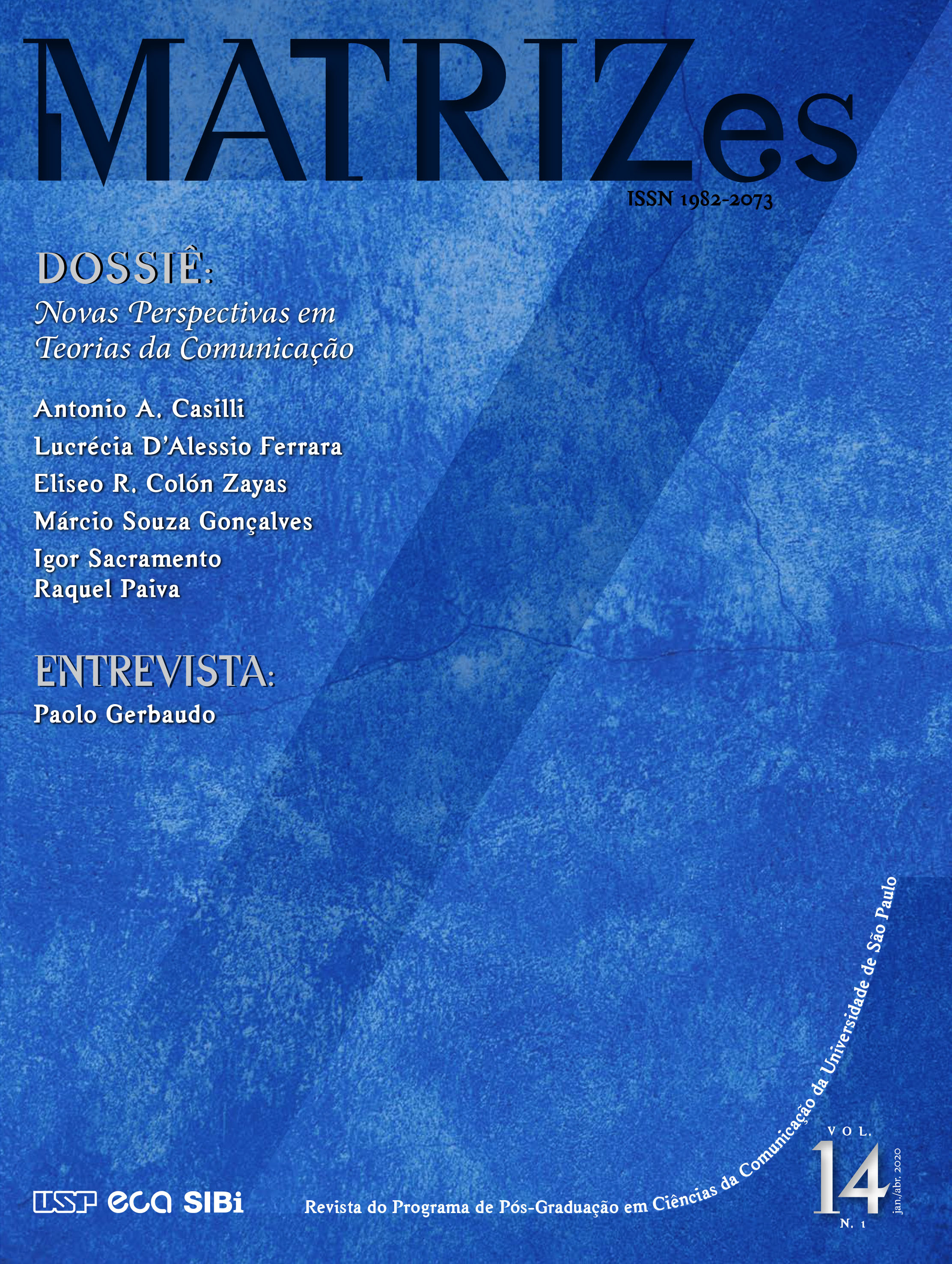The differences of midialogy’s communication
DOI :
https://doi.org/10.11606/issn.1982-8160.v14i1p23-40Mots-clés :
Communication, information, epistemology, technical means, medialogyRésumé
This study aims to analyze the differences between media and medialogy to reach the matrices that are writing a new epistemology of communication. The study of medialogy contemplates investigative views based on the characteristics of Western civilizations developed amid communicative practices of administrative utilitarian use until taking on another investigative aspect within the contemporary and under the influence of digital media. This media is rooted in the observation of political dimensions of communication that reach greater complexity and demand in their investigative paths, presenting another epistemological aspect, which, through dialogue, overcomes the linearity of communication as a scientific area that is more persuasive than social.
##plugins.themes.default.displayStats.downloads##
Références
Agamben, G. (2014). Opera e inoperosità. In Homo sacer: Vol. 4. L’uso dei corpi (pp. 311-314). Vicenza, Itália: Neri Pozza.
Belting, H. (2004). Pour une anthropologie des images. Paris, França: Gallimard.
Debray, R. (2000). Introduction à la médiologie. Paris, França: Presses Universitaires de France.
Espinoza, B. (1973). Ética. São Paulo, SP: Abril Cultural.
Flusser, V. (2002). Filosofia da caixa preta: Ensaios para uma filosofia da fotografia. Rio de Janeiro, RJ: Relume Dumará.
Flusser, V. (2014). Comunicologia: Reflexões sobre o futuro. São Paulo, SP: Martins Fontes.
Geertz, C. (1997). O saber local: Novos ensaios em antropologia interpretativa. Petrópolis, RJ: Vozes.
Hobbes, T. (1974). Leviatã: Ou matéria, forma e poder de um Estado eclesiástico e civil. São Paulo, SP: Abril Cultural.
Kuhn, T. (1975). A estrutura das revoluções científicas. São Paulo, SP: Perspectiva.
Laclau, E., & Mouffe, C. (2010). Hegemonía y estrategia socialista: Hacia una radicalización de la democracia. Buenos Aires, Argentina: Fondo de Cultura Económica.
Latour, B. (1994). Jamais fomos modernos. Rio de Janeiro, RJ: Editora 34.
Le Bon, G. (1999). Psicologia das multidões. Lisboa, Portugal: Publicações Europa-América. (Obra original publicada em 1895)
McLuhan, M. (1972). A galáxia de Gutenberg: A formação do homem tipográfico. São Paulo, SP: Edusp.
McLuhan, M. (2005). McLuhan por McLuhan: Entrevistas e conferências inéditas do profeta da globalização. Rio de Janeiro, RJ: Ediouro.
Tarde, G. (2005). A opinião e as massas. São Paulo, SP: Martins Fontes. (Obra original publicada em 1902)
Zielinski, S. (2006). Arqueologia da mídia: Em busca do tempo remoto das técnicas do ver e do ouvir. São Paulo, SP: Annablume.
Téléchargements
Publiée
Numéro
Rubrique
Licence
(c) Copyright MATRIZes 2020

Ce travail est disponible sous licence Creative Commons Attribution - Pas d’Utilisation Commerciale - Partage dans les Mêmes Conditions 4.0 International.
Les auteurs qui publient dans ce journal acceptent les termes suivants:
- Les auteurs conservent le droit d'auteur et accordent à la revue le droit de première publication, le travail étant concédé simultanément sous la licence Creative Commons Attribution (CC BY-NC-SA 4.0) qui permet le partage de l'œuvre avec reconnaissance de la paternité et de la publication initiale dans cette revue à des fins non commerciales.
- Les auteurs sont autorisés à assumer des contrats supplémentaires séparément, pour une distribution non exclusive de la version de l'ouvrage publiée dans cette revue (par exemple, publication dans un référentiel institutionnel ou en tant que chapitre de livre), avec reconnaissance de la paternité et de la publication initiale dans cette revue.






















